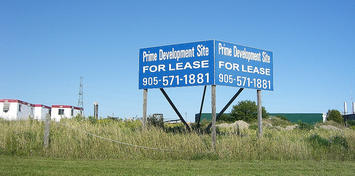 Posted Aug 6, 2012, 4:44 AM
Posted Aug 6, 2012, 4:44 AM
|
 |
Registered User
|
|
Join Date: Aug 2002
Location: Toronto
Posts: 52,200
|
|
|
How Marketing Could Boost Land Development
How Marketing Could Boost Land Development
08/04/2012
By Skip Preble
Read More: http://www.newgeography.com/content/...bout+places%29
Quote:
Zoning ordinances, land use maps and comprehensive plans used by cities to guide growth rarely provide the kind of insight required to make informed decisions about what will truly be best for the city and its residents in the long run. Unfortunately, by failing to incorporate market analysis and financial modeling in the beginning stages of the planning process, too many cities find themselves facing the results of misallocated resources and fiscal difficulties that could have been easily prevented.
- Comments from urban planners and city officials seem to indicate that it is rare for city officials to actually consider market data in their decision making on issues such as transportation thoroughfares, land-use determination, building code changes, and comprehensive city planning. As the owner’s representative, or as a market consultant in numerous design charrettes for master planned communities and urban infill projects, I've often observed an air of tension between those oriented toward design (urban planners and architects), and those who believed good design pays for itself through the value it creates for the end-user (the property owner and/or property developer).
- It's difficult to design profitable private development projects in a vacuum. The same principle applies to cities. The proper planning of cities — plans that meet the needs of both present and future inhabitants in a fiscally responsible manner — cannot be done properly without considering the needs of the market, and the impact that serving those needs will have on the fiscal health of the city. Typically, land uses are based upon residents' comments, the planning commission and/or council vision, and the planning consultant or staff leading the meetings. All of these suggestions stem more from emotion, or from the ease of finding a boiler-plate solution, than from an analysis of what the market wants or needs. Using market data, city leaders could be provided with reasonable projections concerning the near-term and long-term demand for different types of uses for property within their communities.
- This projected data could then be compared to the existing supply and quality of these property types, and a reasonable projection for demand could be provided to the community. Community leaders could then decide how to proceed, based upon the values of the community. Once the initial decision was made, a framework could be put into place to evaluate future decisions on zoning, transportation, and infrastructure improvements. However, this process would only address current and future levels of demand. The real issue is the likelihood of whether or not the projected demand will actually be met. This is where financial modeling techniques very similar to those created for large-scale development can be modified for use by the city.
Using projected demand, market pricing and cost estimates, though, a model can be developed that can test the reasonableness of municipal policies and plans:
• A market study performed for a rapidly growing city reveals that affordable housing will be an even greater issue in the near future than it is currently, but the local school district needs additional funding. A per-lot impact fee to pay for new school construction seems like a reasonable idea, until the financial model proves that it will eliminate all hope of affordable housing being constructed.
• Street ordinances written long ago were originally intended to allow two fire trucks to pass each other while going in opposite directions. Even though the premise has now been proven to be absurd (how often are fire trucks assigned to different fires on the same street!), and, even though the rules produce large, ugly residential streets, the rules are not changed for years…until the long-term cost of maintaining those streets is accounted for in the city financial model. Once the high cost of the future maintenance and repair of the oversized streets is quantified and then compared to their “benefits,” the street ordinance is immediately amended.
• The opportunity to acquire water rights presents itself, with significant upfront costs involved. City leaders are understandably concerned, even though there will be long-term revenues from water sales. But the city market data and financial model indicates that the real benefit to the city is tax revenue generated as a result of having a stable, diverse source of potable water. After considering both the direct and indirect benefits of acquiring the water, the city decides to make the purchase. And the analysis of the economic benefits proved invaluable in selling the bond program to the voters in order to build the required infrastructure to utilize the water rights.
.....
|

__________________
ASDFGHJK
|



